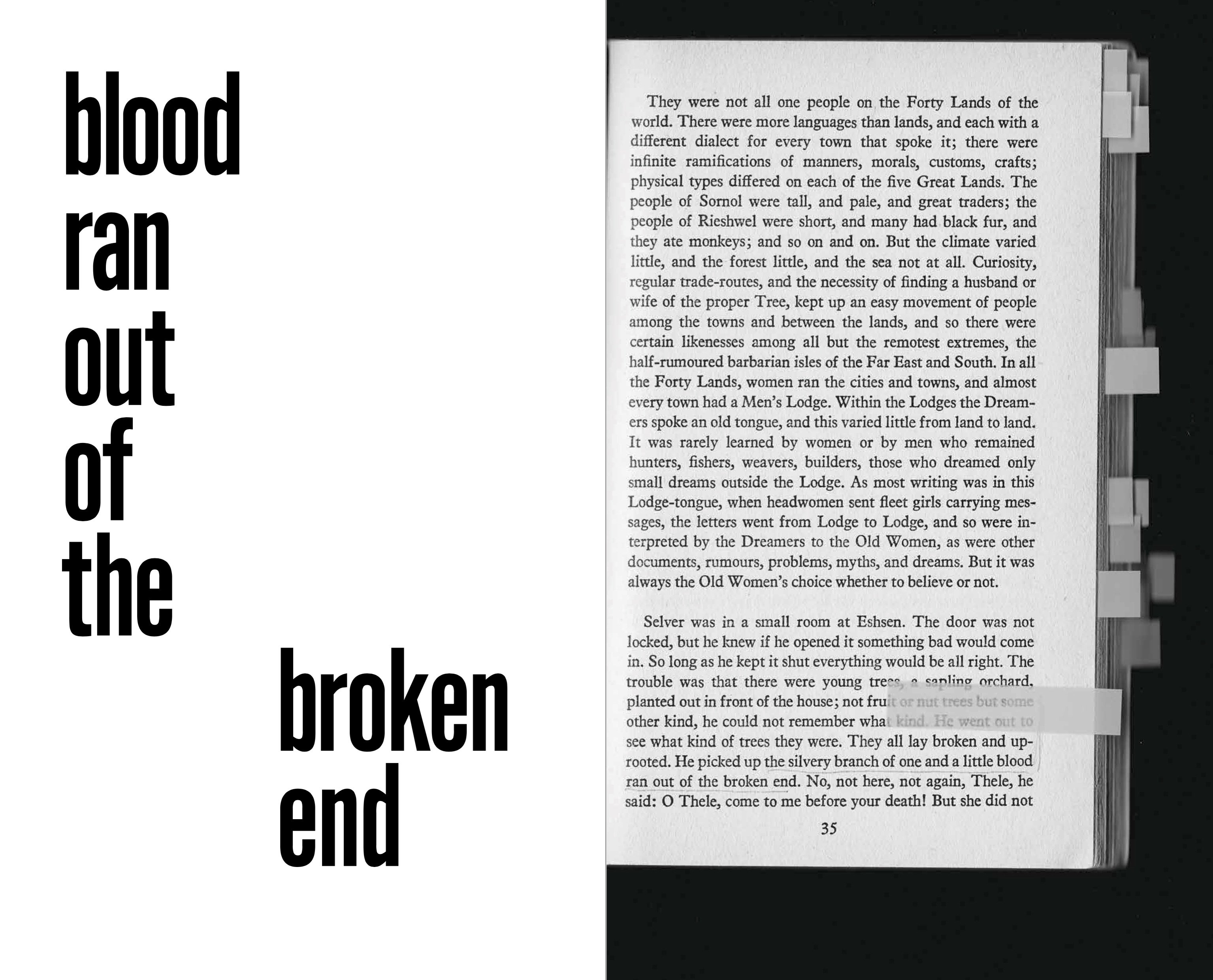
Above ––
The Word for World is Still Forest
Asked to “relay the potency of Le Guin’s words” in The Word for World is Forest (1968) and to “amplify their relevance for contemporary struggles,” a series of passages were reimagined and reshaped into concrete poems – words, sounds, and feelings in the paginated exhibition space of Haus der Kulturen der Welt’s intercalations series.An excerpt from Jason Groves review, “Landscape and Memory,” published by Open Humanities Press:
“In The Word for World is Still Forest arboreal affairs facilitate an entangled book that consists in photographically touring the Tiergarten and its ancient trees, observing riparian erasure along Berlin’s Landwehrkanal, thinking with the tropical rainforest of Ecuador’s Upper Amazon, visualizing genocidal violence through a botanical archaeology of central Amazonia, witnessing the incremental decimation of teak trees in an Indonesian conservation forest, visualizing the extensive data sets of Harvard’s Arnold Arboretum, surfing the subterranean “Wood Wide Web” via elder Douglas fir trees in British Columbia, chronicling the interplay of apocalypse and exuberance in forest mythologies (on this see also Simon Schama’s chapter on forests in Landscape and Memory), [Elise Hunchuck] remediates the fictional forests of an imaginary exoplanet in Ursula Le Guin’s The Word for World is Forest, and, finally, becoming lost in (and, for the patient transcriber, finding one’s way through) the literal forest of a tree alphabet.
Multi-perspectival, The Word for World is Still Forest takes as its object of inquiry the multinaturalism of the forest that perhaps can be best glimpsed through “the Amerindian way of perceiving images in and of the forest” that Pedro Neves Marques elaborates in his contribution. Though its method may be one of defamiliarization, this volume—a forest school staffed by visual artists, curators, ethnographers, anthropologists, forest ecologists, data scientists, and forensic architects—can be judged not by its capacity to disorient but rather by its potential for emancipatory orientation that for Marques consists in the question of “how to inhabit the space of the in-between, the interval between “worlds”—collaboratively and politically—in order to contribute to a decolonization of the many worlds from the imposition of the “one world.”
The Word for World is Still Forest is freely available online as a PDF courtesy of the Haus der Kulturen der Welt, Berlin.
Facsimiles in The Word for World is Still Forest are courtesy of Ursula K. Le Guin, The Word for World is Forest. London: Granada Publishing, 1980.










Above ––
The Word for World is Forest design and typeset by Elise Hunchuck (2017).